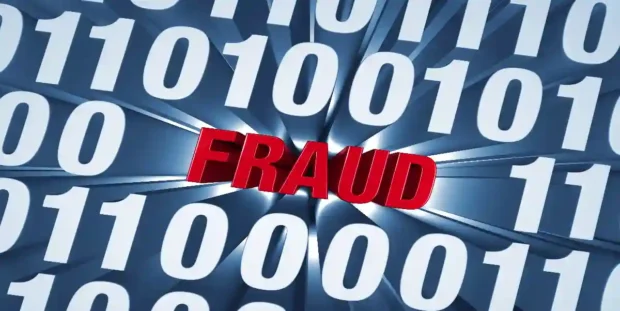Introduction to the Microstrategy Class Action Lawsuit
The most important lawsuit against MicroStrategy aims to protect investors who bought securities between April 30, 2024, and April 4, 2025. Legal proceedings began in the United States District Court for the Eastern District of Virginia under Hamza v. MicroStrategy Incorporated d/b/a Strategy, No. 25-cv-00861. The Microstrategy Class Action Lawsuit claims violations of Sections 10(b) and 20(a) of the Securities Exchange Act of 1934. MicroStrategy and its executives allegedly misled investors about the company’s business outlook and prospects.
Investors who bought MicroStrategy shares during this period should act quickly. The Private Securities Litigation Reform Act of 1995 sets a deadline of July 15, 2025, to file lead plaintiff motions. This piece will get into MicroStrategy’s bitcoin accumulation strategy since 2020 that led to these events. We’ll also explore the new accounting standards’ impact on investors and outline steps affected shareholders can take.
Investors Sue MicroStrategy Over Bitcoin Losses

MicroStrategy faces a major legal battle as law firms file a Microstrategy Lawsuit for investors who lost money after the company’s Bitcoin strategy failed. The suit was filed on May 16, 2025, in the United States District Court for the Eastern District of Virginia.
Lawsuit filed after $5.91B unrealized crypto loss
The Microstrategy Lawsuit stems from MicroStrategy’s announcement of a $5.91 billion unrealized loss on its digital assets in the first quarter of 2025. The company revealed these numbers on April 7, 2025, in its filing with the United States Securities and Exchange Commission. This disclosure showed how the new Accounting Standards Update No. 2023-08 (ASU 2023-08) affected their finances.
The market responded harshly. MicroStrategy’s Class A common stock price dropped by $25.47 per share – an 8.67% decline – and closed at $268.14 on April 7. The company worried investors even more by warning that it “may not be able to regain profitability in future periods, especially when you have significant unrealized losses related to our digital assets”.
Things got worse on May 1, 2025. MicroStrategy’s Q1 2025 earnings report confirmed these losses. The company reported an unrealized fair value loss of about $5.90 billion on digital assets that quarter. This news reinforced investors’ fears about the company’s Bitcoin-focused strategy.
Class period spans April 30, 2024 to April 4, 2025
The class action covers investors who bought MicroStrategy securities between April 30, 2024, and April 4, 2025. During this time, the plaintiffs say MicroStrategy’s executives made misleading statements about their Bitcoin investment approach.
The Microstrategy Class Action Lawsuit names MicroStrategy’s chairman Michael J. Saylor, CEO Phong Le, and CFO Andrew Kang as defendants. They allegedly violated federal securities laws – specifically Sections 10(b) and 20(a) of the Securities Exchange Act of 1934 and Rule 10b-5.

The allegations focus on three main points where MicroStrategy management allegedly misled shareholders:
- The real profitability of their Bitcoin-centric investment plan
- The risks of their cryptocurrency strategy
- How the upcoming accounting standards change would affect them
The complaint also states that the company understated cryptocurrency market’s extreme volatility while making false claims about their Bitcoin strategy’s profitability.
Affected investors must act quickly. The deadline to register as lead plaintiff is July 15, 2025. This date is the final day for investors to seek appointment as lead plaintiff under the Private Securities Litigation Reform Act of 1995.
MicroStrategy’s legal troubles come as regulators look more closely at how companies disclose and invest in volatile cryptocurrency markets.
MicroStrategy Adopts New Accounting Rule ASU 2023-08
The Financial Accounting Standards Board (FASB) released Accounting Standards Update 2023-08 on December 13, 2023. This new framework for cryptocurrency reporting would later become central to the MicroStrategy class action lawsuit. MicroStrategy adopted this accounting standard on January 1, 2025, a decision that would affect the company’s shareholders dramatically.
What is ASU 2023-08?
ASU 2023-08 revolutionizes how companies report cryptocurrency holdings in their financial statements. Companies like MicroStrategy previously treated digital assets as indefinite-lived intangible assets under the cost-less-impairment model. This approach made companies record losses when cryptocurrency values fell but stopped them from recognizing gains unless they sold the assets.
The new standard applies to assets that meet all of the following criteria:
- Meet the definition of intangible asset under US GAAP
- Do not provide enforceable rights to underlying goods or services
- Are created or reside on blockchain or similar distributed ledger technology
- Are secured through cryptography
- Are fungible
- Are not created or issued by the reporting entity or its related parties
ASU 2023-08 requires entities to measure qualifying crypto assets at fair value each reporting period. Changes in fair value now appear directly in net income. FASB created this standard to “provide investors and other capital allocators with more decision-useful information that better reflects the underlying economics of crypto assets”.
How the accounting change affected financial reporting

MicroStrategy’s financial reporting changed substantially after adopting ASU 2023-08. The company’s SEC filing acknowledged that “due in particular to the volatility in bitcoin’s price, we expect the adoption of ASU 2023-08 to affect our financial results materially, increase our financial results’ volatility and affect our bitcoin’s carrying value on our balance sheet”.
These predictions proved accurate. The new standard forced MicroStrategy to report an unrealized loss of $5.91 billion on its digital assets for Q1 2025. This massive financial hit caused the company’s stock price to drop 8.7% on April 7, 2025.
The adoption process required a major adjustment to MicroStrategy’s financial statements. The company applied “a cumulative-effect net increase to the opening balance of retained earnings as of January 1, 2025, of $12.74 billion”. This adjustment shows the difference between crypto assets’ carrying amount under the previous accounting model and their fair value at 2025’s start.
The accounting change creates potential tax implications beyond immediate financial reporting effects. This reclassification could make MicroStrategy liable for a 15% tax on unrealized bitcoin gains under the Inflation Reduction Act’s Corporate Alternative Minimum Tax (CAMT). The company acknowledged this risk in regulatory filings, stating it “could become subject to the corporate alternative minimum tax in the tax years 2026 and beyond” unless regulations change.
The accounting change stands at the core of the MicroStrategy lawsuit. Investors claim the company failed to properly disclose Bitcoin volatility’s risks and the new standard’s effects on financial statements. Hofstra University’s associate professor of accounting, Jack Castonguay, noted that “for the first quarter they adopt the standard almost all companies holding it will have to report a loss since its value has declined this quarter”.
Stock Price Drops After Disclosure of Unrealized Losses Claims MicroStrategy lawsuit
MicroStrategy’s Bitcoin strategy showed its harsh reality after the company revealed huge unrealized losses in early 2025. The market was quick to react as the company’s cryptocurrency holdings’ financial impact came to light.
April 7, 2025: Stock falls 8.7% after SEC filing
MicroStrategy’s stock took a big hit after filing its Form 8-K with the Securities and Exchange Commission on April 7, 2025. The company revealed a massive $5.91 billion unrealized loss on its digital assets for the first quarter of 2025. The stock dropped $25.47, or 8.7% and closed at $268.14 per share.
Trading that day was extremely volatile. The stock bounced between $252.60 and $297.60 as investors tried to make sense of the news. This dramatic one-day drop wiped out months of gains and pushed MicroStrategy’s shares down to an 8.85% year-to-date loss.
The company also warned investors it “may not be able to regain profitability in future periods, particularly if [it] incur[s] significant unrealized losses related to [its] digital assets”. This warning, combined with the huge unrealized loss, made investors increasingly nervous about MicroStrategy’s Bitcoin-focused strategy.
May 1, 2025: Q1 earnings confirm $5.9B loss
The market’s fears proved right when MicroStrategy released its first quarter 2025 financial results on May 1, 2025. The earnings report matched the earlier disclosed unrealized fair value loss on digital assets of about $5.90 billion. This official confirmation in the earnings report deepened investor concerns about the company’s Bitcoin holdings.
The financial damage went beyond just unrealized losses. Operating expenses shot up by an incredible 1,976% due to the $5.90 billion paper loss. This was nowhere near the $191.60 million impairment charge under the old accounting model.
The company did get some relief through a $1.69 billion income tax benefit that helped offset the huge losses. In spite of that, the stock faced more pressure and dropped another 10.2% after the earnings filing.
The company owned 528,185 Bitcoins at the time, bought at an average price of $66,384.56. The massive unrealized loss happened because Bitcoin’s price fell below $79,096.38 after trading above $83,000.
These financial disclosures and stock price drops became key evidence in the MicroStrategy class action lawsuit. Investors claimed the company didn’t properly disclose the risks of its aggressive Bitcoin strategy and what the new accounting standards could mean.
MicroStrategy Lawsuit Alleges Misleading Statements by Executives
The MicroStrategy class action lawsuit brings serious accusations against the company’s core team. Michael Saylor (Executive Chairman), Phong Le (CEO), and Andrew Kang (CFO) face allegations of violating federal securities laws. The MicroStrategy class action lawsuit claims they made false and misleading statements about their business operations and future prospects.
MicroStrategy lawsuit: Failure to disclose risks of Bitcoin volatility

The lawsuit’s main focus points to MicroStrategy’s leadership team hiding major risks tied to Bitcoin’s price swings. The company promoted ASU 2023-08 as a way to show transparent accounting. They allegedly hid how these new fair value rules could lead to massive losses in valuation.
The MicroStrategy class action lawsuit highlights that defendants “failed to disclose material adverse facts about the Company’s business, operations, and prospects”. They didn’t properly explain “the magnitude of losses Strategy could recognize on the value of its digital assets following its adoption of ASU 2023-08″.
Overstated profitability of Bitcoin strategy
MicroStrategy executives also face accusations of exaggerating their cryptocurrency strategy’s potential profits. The defendants “made false and/or misleading statements and/or failed to disclose that the predicted profitability of MicroStrategy’s bitcoin-focused investment strategy and treasury operations was overstated” during the class period claims the MicroStrategy lawsuit.
The company gave “rosy assessments” of its performance as a bitcoin treasury company after adopting new accounting standards, despite knowing the risks. The warning that it “may not be able to regain profitability in future periods” came only after substantial losses became public.
Use of misleading KPIs like BTC Yield and BTC Gain
The company created several non-standard financial metrics to promote its Bitcoin strategy, which raises more concerns. These key performance indicators (KPIs) included:
- “BTC Yield”
- “BTC Gain”
- “BTC $ Gain”
These metrics seemed helpful tools to learn about the company’s Bitcoin holdings. The lawsuit suggests they were created to “mask the volatility” while “exaggerating profitability”. These KPIs “divorced from traditional earnings or cash flow metrics, created a distorted narrative of stability”.
MicroStrategy says it “intends to vigorously defend itself against these claims”.
What Investors Need to Know About Joining the Class Action
Legal options matter greatly to investors affected by the MicroStrategy lawsuit. The class action has specific timeframes, requirements, and potential benefits that need careful review.
Who qualifies as a class member in the MicroStrategy lawsuit?
You automatically qualify as a class member in the MicroStrategy lawsuitif you purchased or acquired MicroStrategy Incorporated (d/b/a Strategy) securities during the designated Class Period from April 30, 2024, to April 4, 2025 and suffered a loss. Anyone who bought MSTR shares on the NASDAQ exchange during this period and lost money due to the company’s Bitcoin strategy and accounting practices qualifies. Your qualification requires no immediate action.
How to file a lead plaintiff motion in the MicroStrategy lawsuit by July 15, 2025
July 15, 2025 marks the deadline to file for lead plaintiff status. The Private Securities Litigation Reform Act of 1995 allows any investor who bought MicroStrategy securities during the Class Period to seek appointment as lead plaintiff. Lead plaintiffs direct the MicroStrategy lawsuit and select legal representation for all class members.
Lead plaintiff requirements:
- Contact a securities litigation firm before the deadline
- Demonstrate substantial financial losses
- Show you are typical and adequate of the class

The investor with the biggest financial stake in the relief sought usually becomes the lead plaintiff. If you suffered substantial losses and wish to serve as lead plaintiff of the MicroStrategy class action lawsuit or just have general questions about you rights as a shareholder, please contact attorney Timothy L. Miles of the Law Offices of Timothy L. Miles, at no cost, by calling 855/846-6529 or via e-mail at tmiles@timmileslaw.com.
What happens if you do nothing in the MicroStrategy Lawsuit?
You automatically stay an “absent member” of the class action if you choose not to pursue lead plaintiff status. This status lets you benefit from any settlement or judgment without taking action now. Absent class members cannot control litigation decisions.
Note that shareholders pay no upfront fees or expenses since all representation works on a contingency fee basis. All the same, your choice not to participate actively might mean missing out on recoveries from this most important securities fraud case.
Conclusion: The Road Ahead for the MicroStrategy Lawsuit
MicroStrategy’s massive $5.91 billion unrealized loss has created huge challenges for shareholders. This piece explores how the company’s adoption of Accounting Standards Update 2023-08 revealed the true volatility of its Bitcoin-centered strategy. The stock dropped 8.7% in a single day after these disclosures and erased months of investor gains.
The MicroStrategy class action lawsuit claims the company didn’t properly warn investors about Bitcoin’s volatility risks while overstating the strategy’s profitability. The plaintiffs also argue that the company used misleading key performance indicators like “BTC Yield” and “BTC Gain” to hide potential downside risks. These claims raise serious questions about corporate transparency when companies choose unusual investment strategies.
July 15, 2025 marks a crucial deadline for affected investors. Shareholders must decide to pursue lead plaintiff status or remain passive class members before this date. Investors who faced substantial losses and want to serve as lead plaintiff of the MicroStrategy class action lawsuit can contact attorney Timothy L. Miles of the Law Offices of Timothy L. Miles. He can be reached at no cost by calling 855/846-6529 or via e-mail at tmiles@timmileslaw.com.
The case remains in early stages but explains broader concerns about cryptocurrency accounting practices and disclosure requirements. Its outcome could affect how publicly traded companies handle and communicate about digital asset investments. MicroStrategy’s story serves as a warning about the financial risks when aggressive Bitcoin strategies collide with new accounting standards and market volatility.
Freqently Asked Questions About the MicroStrategy Lawsuit
Q1. What is the MicroStrategy class action lawsuit about? The lawsuit alleges that MicroStrategy and its executives made false and misleading statements about the profitability of their Bitcoin investment strategy, failed to adequately disclose risks associated with Bitcoin volatility, and used misleading performance indicators. It was filed after the company reported a $5.91 billion unrealized loss on its digital assets in Q1 2025.
Q2. Who can participate in the MicroStrategy lawsuit? Investors who purchased or acquired MicroStrategy securities between April 30, 2024, and April 4, 2025, are eligible to participate in the class action lawsuit. This includes anyone who bought MSTR shares on the NASDAQ exchange during this period and experienced losses related to the company’s Bitcoin strategy.
Q3. What is the deadline for filing a lead plaintiff motion in the MicroStrategy lawsuit? The deadline to file for lead plaintiff status in the MicroStrategy class action lawsuit is July 15, 2025. Investors who wish to serve as lead plaintiff must contact a securities litigation firm before this date and demonstrate substantial financial losses.
Q4. What happens if I don’t take any action regarding the MicroStrategy lawsuit? If you qualify as a class member but choose not to pursue lead plaintiff status, you automatically remain an “absent member” of the class action. This means you can still potentially benefit from any settlement or judgment without taking immediate action, but you won’t have control over litigation decisions.
Q5. How much can I expect to receive from the MicroStrategy lawsui? The potential payout from a class action lawsuit can vary widely depending on the specifics of the case, the number of claimants, and the final settlement or judgment amount. While it’s impossible to predict the exact amount, payouts in similar cases have ranged from a few dollars to several hundred or even thousands of dollars per claimant.
Contact Timothy L. Miles Today About a MicroStrategy Class Action Lawsuit
If you suffered losses in MicroStrategy stock, call us today for a free case evaluation about an MicroStrategy class action lawsuit. 855-846-6529 or tmiles@timmileslaw.com (24/7/365).
Timothy L. Miles, Esq.
Law Offices of Timothy L. Miles
Tapestry at Brentwood Town Center
300 Centerview Dr. #247
Mailbox #1091
Brentwood,TN 37027
Phone: (855) Tim-MLaw (855-846-6529)
Email: tmiles@timmileslaw.com
Website: www.classactionlawyertn.com







